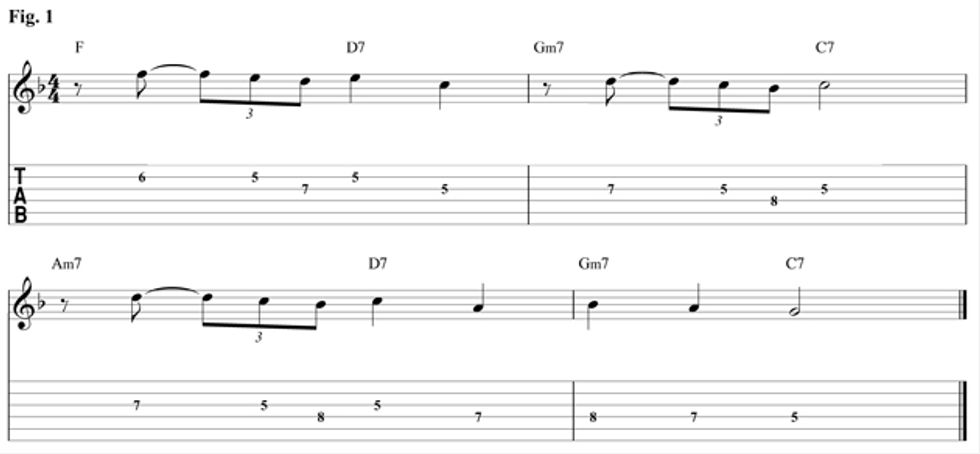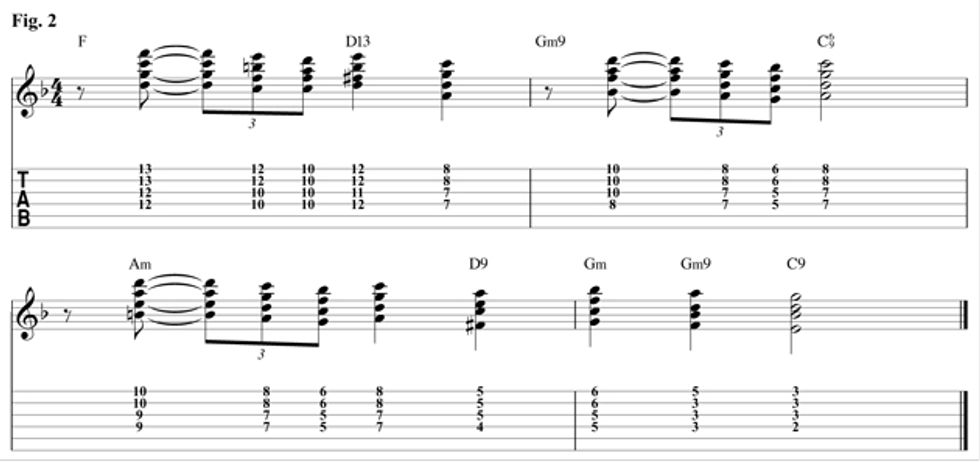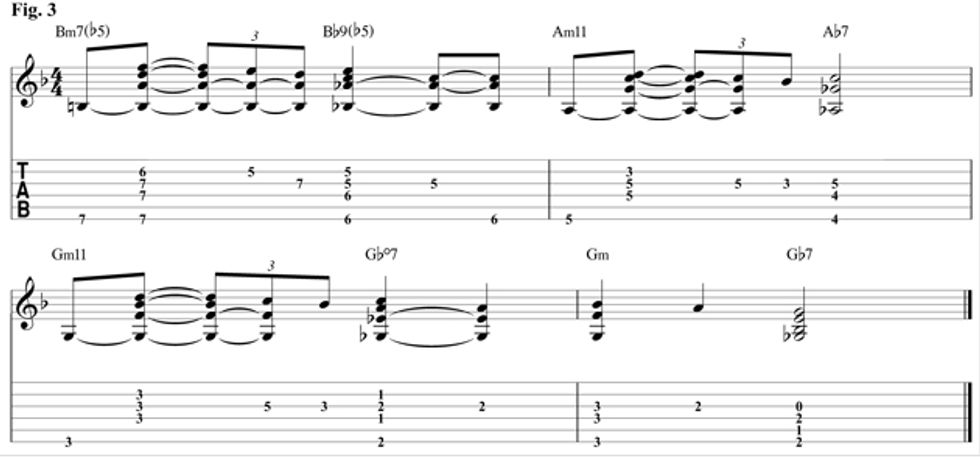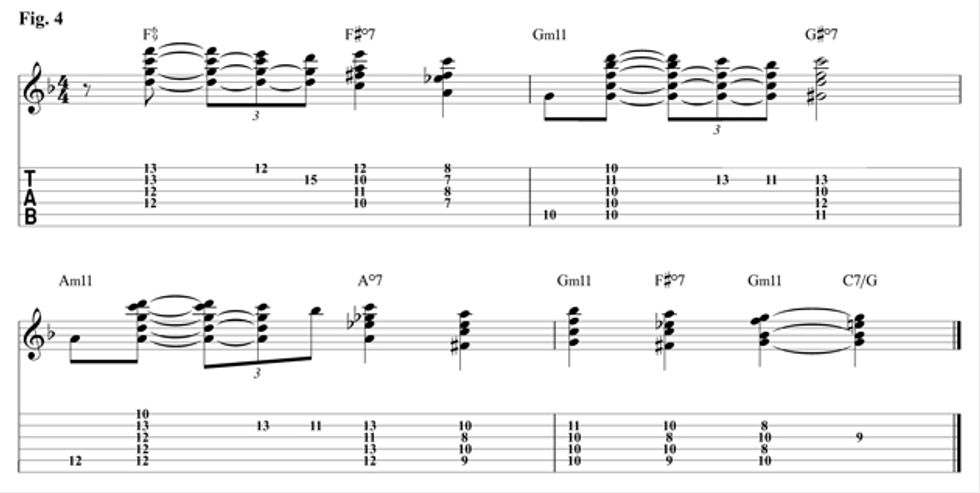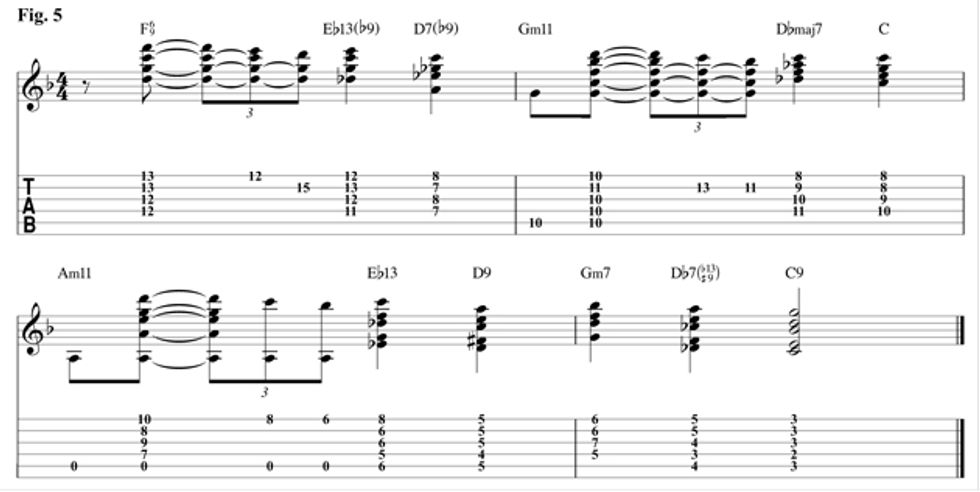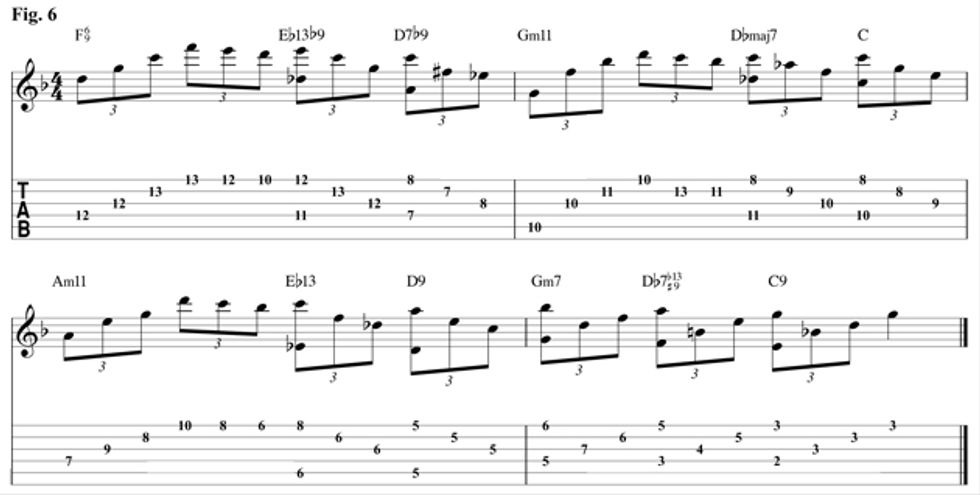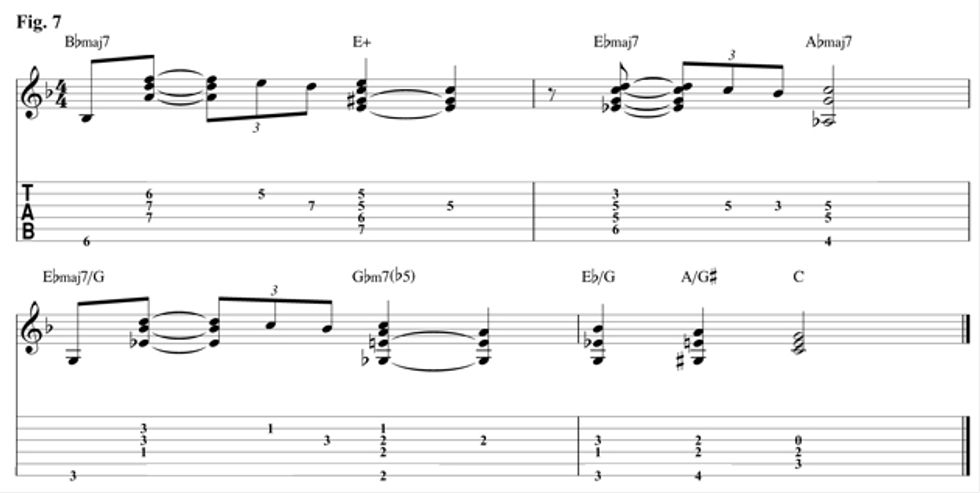Impress your friends and scare your neighbors with these essential tips for playing solo guitar.
Chops: Intermediate
Theory: Advanced
Lesson Overview:
• Learn to harmonize a melody using block chords with quartal voicings.
• Use descending chord substitutions in your chord melody.
• Discover new ways to approach chord progressions.
Click here to download a printable PDF of this lesson's notation.
It’s no secret: Playing solo is one of the hardest things to master on guitar. In this lesson, we’ll explore six common “tricks” you can use to bring your solo chops to the next level. And you can apply these tried-and-true techniques to almost any melody.
To start with, you'll need a melody and some chord changes, and I’ve provided both in Fig. 1. This example consists of an easy diatonic melody and a very common jazz chord progression. They’ll provide the basic foundation for our new techniques.
Trick #1: Use block chords
Now that you have the melody and chord changes in your ear, let’s apply our first trick. If we look at how the guitar is tuned, it's arranged in fourths with a third between the 2nd and 3rd strings. This makes it very easy to play stacked fourths or quartal chords.
Fig. 2 is written in a “block” style using mostly chords built from stacked fourths, along with a few other goodies. Block-style playing consists primarily of parallel harmony—all the notes move in the same direction with the same rhythm. To add more spice to the sound, I included some quartal voicings from the Lydian mode. You’ll notice I’m not really concerned with the bass movement of my chords in this example. Instead, I’ve focused on harmonizing the melody from the top down using as many fourth intervals as I can without totally compromising the essential harmony.
Trick #2: Use descending chord substitutions
Next we’ll concentrate on the outer notes of the chord melody, specifically the top note (that’s the melody) and the bottom note. I’m going to try to play a descending bass line while maintaining my melody note movement on top. The first note of my melody is F, it also happens to be the first chord we play.
There is a common substitution that you can use to start your downward reharmonization. Use a minor7b5 chord a tritone away from the root with the melody as the top note. So, in Fig. 3 our new chord will be Bm7b5 chord with F on top. From there I'm just basically going through the descending cycle of fifths and substituting the b5 sub for every dominant 7 chord. So, instead of having Bm7b5-E7-Am11-D7-Gm11-C7, I have Bm7b5-Bb9b5-Am11-Ab7-Gm11-Gbdim7-Gm-Gb7.
Trick #3: Use ascending chord substitutions
Now we’ll go in the opposite direction. When chords are moving in a cycle, they seem to naturally flow through a downward progression. By taking the melody as our top voice and using the bass note as our root note, we’ll “go against the grain."
In Fig. 4, notice how I’ve again pretty much substituted every other chord. This time I’m using mostly diminished chords to achieve the harmonic direction I want to move in. All the diminished chords are functioning as the V chord of the minor chord they precede.
Trick #4: Use chromatic approach chords
The concept behind this technique is quite simple: Approach any chord from a half-step below or above. In Fig. 5, I’ve approached all the dominant 7 chords from a half-step above. Instead of F-D7-Gm-C7-Am-D7-Gm-C7, I now have F6/9-Eb13b9-D7b9-Gm11-Dbmaj7-C-Am11-Eb13-D9-Gm7-Db7#9b13-C9. Most of my approach chords are dominant, but I do use a Dbmaj7 chord going to C major, it all depends on the melody and, ultimately, your ear.
Trick #5: Arpeggiate the chords
In this example, I use the same chords as in Fig. 5. The big difference here is that I play through every chord one note at a time. Arpeggiating chords is a great way to change up the feel of a chord solo. I picked eighth-note triplets for the rhythm because of the tempo and the way they fit the feel of the melody. Again, my choices are ultimately based on what I think sounds good.
Notice how in Fig. 6 I’ve inserted a couple of intervals into the arpeggiated melody. I like the way they sound and how they break up the constant stream of single notes.
Trick #6: Reharmonize
This one is the easiest to explain and the hardest to do. In this example, we’ll keep our melody and throw out the chord changes. In Fig. 7, you’ll see I’ve abandoned our original changes. I decided to start on a Bbmaj7 chord and I just went from there. But these aren’t a random set of changes—all the chords I picked have the melody notes in them.
I also tried to connect my chords as musically as possible. The only rule is that the melody notes must be in the chords you pick. This technique is fun because you can throw a lot of the harmonic rules right out the window and just go for it!
Take these “tricks" and start applying them to your favorite jazz standards. With a little practice and patience you’ll be happy with the results.
This one is the easiest to explain and the hardest to do! Here, we are going to keep our melody and throw out the chord changes. In Fig. 7 you will see that I have abandoned our original changes. I decided to start on a Bbmaj7 chord and I just went from there. All the chords that I picked have the melody notes in them. I also tried to connect my chords as musically as I could. The only rule is that the melody notes have to be in the chords you pick! This technique is a lot of fun because you can throw a lot of the harmonic rules right out the window and just go for it!
